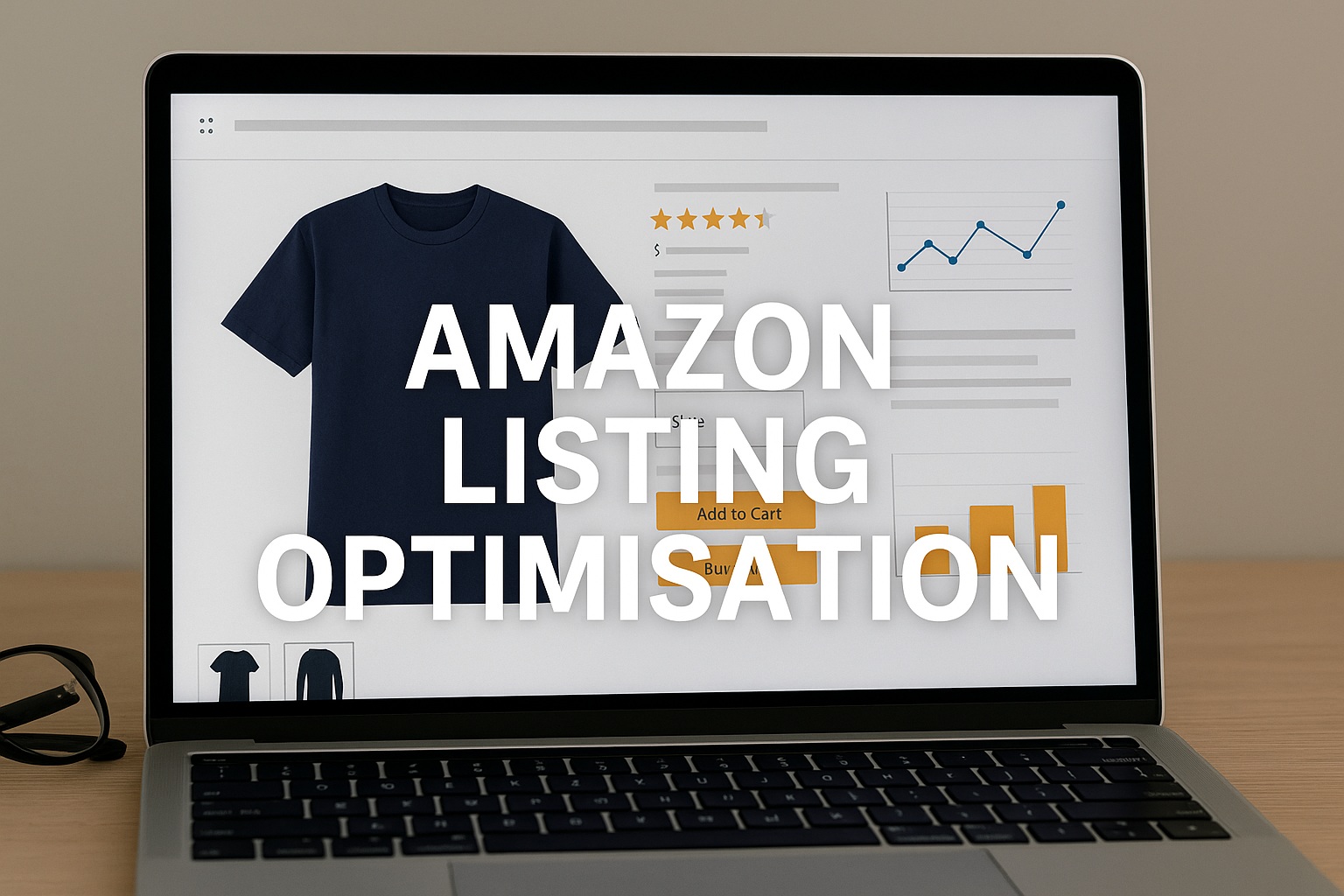If you’re selling on Amazon, standing out from the crowd isn’t just a nice bonus—it’s essential. With millions of products available on the platform, your listing needs to be more than just live; it needs to be optimised.
Amazon listing optimisation is the process of refining your product pages so they not only attract more clicks but also convert those clicks into sales.
Why Listing Optimisation Matters
Shoppers on Amazon typically make quick decisions. If your product doesn’t appear on the first page of results or doesn’t grab their attention immediately, you could be losing out. Optimising your listing increases your visibility, improves your ranking, and builds trust with potential buyers.
Unlike paid ads, which require ongoing investment, a well-optimised listing keeps working for you over time—bringing in organic traffic and converting more shoppers into customers.
Use Keywords Strategically
The foundation of listing optimisation is keyword research. Keywords are the words or phrases shoppers use to search for products. If you know what your customers are searching for, you can make sure your product appears when they do.
Start by using tools like Helium 10, Jungle Scout, or Amazon’s own autocomplete suggestions. Find relevant, high-traffic keywords related to your product and niche.
Use those keywords in:
- The product title
- Bullet points
- Product description
- Backend search terms
However, don’t stuff keywords unnaturally. Your listing still needs to sound natural and easy to read. Think like your customer—what would you search for if you were looking for your product?
Optimise Your Product Title
Your title is one of the most important factors in your listing. Amazon uses it heavily in search rankings, and it’s also the first thing a shopper sees.
A good title includes:
- Your primary keyword
- The brand name (if applicable)
- Key product features (size, quantity, material)
- Compatibility (if relevant)
For example:
“Organic Raw Almonds 1kg – Non-GMO, Gluten-Free Snack – Bulk Pack for Cooking & Baking”
Stick to the character limits based on your category and avoid using symbols or unnecessary words.
Maintain Competitive Pricing with an Amazon Repricer
Even with the most optimised listing, pricing still plays a big role in your success. Amazon shoppers are price-conscious, and even small differences can impact conversion rates.
Using an Amazon repricer tool helps you stay ahead without manually adjusting your prices every day. These tools monitor market prices and automatically adjust yours based on competitor behaviour, stock levels, or your own rules.
Craft Compelling Bullet Points
Your bullet points are where you highlight the benefits and features of your product. This is your chance to convince shoppers why your product is the right choice.
Focus on:
- Unique selling points
- Benefits to the customer
- Any guarantees or certifications
- Usage suggestions or compatibility
Keep each bullet point concise and easy to scan. Break them into digestible pieces so shoppers can quickly find what matters to them.
Write an Engaging Product Description
While many customers skim the title and bullet points, some will scroll down for more detail. Your product description is a great place to tell your brand story, explain how the product solves a problem, and add extra information.
Use short paragraphs, avoid jargon, and always think about what would help the buyer feel confident in their purchase. If you’re brand registered, you can also use Enhanced Brand Content (EBC) or A+ Content, which allows for images and layout formatting to create a more visually engaging experience.
Use High-Quality Images
Images are just as important as text in Amazon listings. In fact, many customers make buying decisions based on the photos alone.
Make sure you:
- Use high-resolution images (at least 1000px for zoom)
- Show the product from multiple angles
- Include lifestyle photos that show the product in use
- Add infographics to highlight key features or dimensions
Images should build trust and answer any visual questions a buyer might have. If they can’t physically touch or try your product, your pictures need to do that job.
Monitor and Adjust Based on Performance
Once your listing is live, your work isn’t done. Use Amazon’s analytics tools to track your performance. Look at:
- Conversion rates
- Click-through rates (CTR)
- Keyword rankings
- Sales history
If your conversion rate is low, it could be a sign your listing isn’t connecting with your audience. Try updating your photos, reworking your bullet points, or tweaking your pricing strategy with the help of a repricer.
A/B testing tools can also help you test different headlines, images, or descriptions to see what performs best.
Amazon listing optimisation is one of the most effective ways to stand out and dominate your niche. By combining keyword research, compelling content, professional images, and smart pricing tools like an Amazon repricer, you create a listing that doesn’t just exist—it performs.

